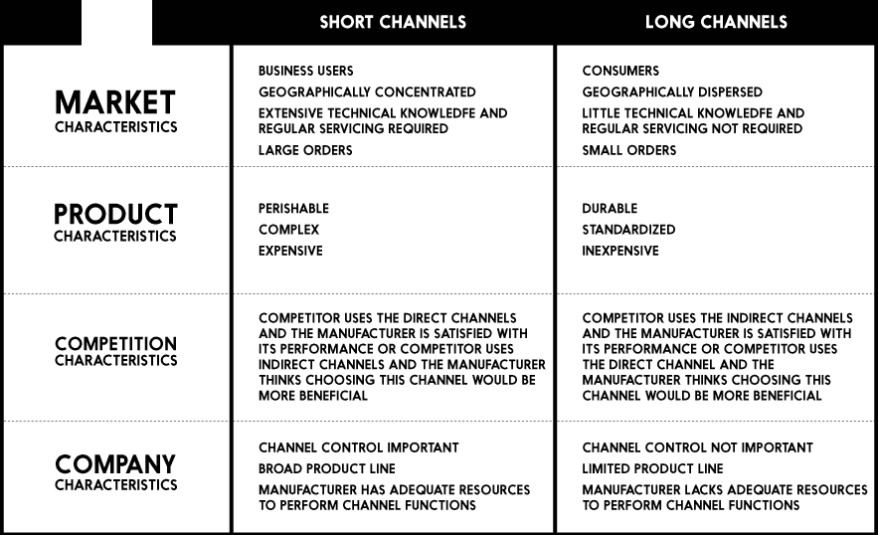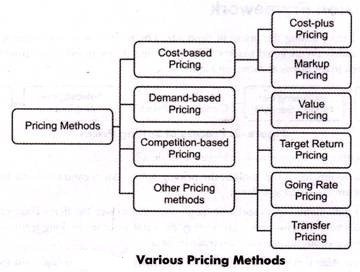The Promotion Mix refers to the blend of several promotional tools used by the business to create, maintain and increase the demand for goods and services.
The fourth element of the 4 P’s of Marketing Mix is the promotion; that focuses on creating the awareness and persuading the customers to initiate the purchase. The several tools that facilitate the promotion objective of a firm are collectively known as the Promotion Mix.
Gary Armstrong defines promotion mix as, “A company’s promotional mix includes advertising, personal selling, sales promotion, public relations, direct marketing. It also includes product design, shape, package, colour, label etc., as all these communicate something to buyer.”
Philip Kotler opines, “A company’s total marketing communication mix also called promotion mix consists of specific blends of advertising, personal selling, sales promotion, public relations and direct marketing tools that the company use to pursue its advertising and marketing objectives.”
Promotion is a process of communication involving information, persuasion, and influence. It includes all types of personal or impersonal communication by a producer with prospective customers as well as middlemen in the distribution network.
The purpose of promotion is to inform, persuade and influence the prospective customers. Personal selling, advertising, public relations, sales promotion and direct marketing are widely used to inform the people about the availability of products and create among them the desire to buy the products.
Promotion is a form of corporate communication that uses various methods to reach a targeted audience with a certain message in order to achieve specific organizational objectives. Nearly all organizations, whether for-profit or not-for-profit, in all types of industries, must engage in some form of promotion.
Such efforts may range from multinational firms spending large sums on securing high-profile celebrities to serve as corporate spokespersons to the owner of a one-person enterprise passing out business cards at a meeting of local business persons.
Promotion is communication from a marketers to the prospective buyers in the market. It tries to instil into buyer’s minds images (through advertising, personal selling, sales promotion and publicity) that make them buy the product.
The Promotion Mix is the integration of Advertising, Personal Selling, Sales Promotion, Public Relations and Direct Marketing. The marketers need to view the following questions in order to have a balanced blend of these promotional tools.
- What is the most effective way to inform the customers?
- Which marketing methods to be used?
- To whom the promotion efforts be directed?
Objectives of Promotion Mix
Promotion can be used for number of reasons for ex: Promotional activity can increase sales, raise awareness or concerns about particular issues develop a brand image or alter public opinion.
The possible objectives for promotion mix may include the following:
-
Build Awareness
New products and new companies are often unknown to a market, which means initial promotional efforts must focus on establishing an identity. In this situation the marketer must focus promotion to effectively reach customer and tell the market who they are and what they have to offer.
-
Create Interest
Moving a customer from awareness of a product to making a purchase can present a significant challenge. Consumer buying behaviour depends on the type of customer so the customer must first recognize they have a need before they actively start to consider a purchase.
The focus on creating messages that convince customers that a need exists has been the hallmark of marketing for a long time with promotional appeals targeted at basic human characteristics such as emotions, fears, humor, sex etc.
-
Provide Information
Some promotions are designed to assist customers in the search stage of the purchasing process. In some cases, such as when a product is so novel it creates a new category of product and has few competitors the information is simply intended to explain what the product is and may not mention any competitors.
In other situations where the product competes in an existing market, informational promotion may be used to help with a product positing strategy.
-
Stimulate Demand
The right promotion can drive customers to make a purchase. In the case of products that a customer has not previously purchased or has not purchased in a long time, the promotional efforts may be directed at getting the customer to try the product.
This is often seen on the internet where software companies allow for free demonstrations or even free downloadable trials of their products. For customer base products, promotion can encourage customers to increase their purchasing by providing a reason to purchase products sooner or purchase in greater quantities than they normally do.
-
Reinforce the Brand
Once a purchase is made a marketer can use promotion to build a strong relationship that can lead to the purchaser becoming a loyal customer. For instance, many retail stores now ask for a customer’s email address so that follow-up emails containing additional product information or even an incentive to purchase other products from the retailer can be sent in order to strengthen the customer marketer relationship.
Elements of promotional mix are also called as tools, means, or components. Basically, there are five elements involved in promotional mix. Some authors have considered more elements, too. However, we will consider five elements as shown in Figure 1.

- Advertising
Advertising is defined as any paid form of non-personal presentation and promotion of ideas, goods, and services by an identified sponsor. It is a way of mass communication. It is the most popular and widely practiced tool of market promotion. Major part of promotional budget is consumed for advertising alone. Various advertising media – television, radio, newspapers, magazines, outdoor means and so forth – are used for advertising the product.
Characteristics of advertising are as follow:
(i) Adverting is non-personal or mass communication. Personal contact is not possible.
(ii) It is a paid form of communication.
(iii) It is a one-way communication.
(iv) Identifiable entity/sponsor-company or person gives advertising.
(v) It is costly option to promote the sales.
(vi) It can be reproduced frequently as per need.
(vii) Per contact cost is the lowest.
(viii) Various audio-visual, print, and outdoor media can be used for advertising purpose.
(ix) It is a widely used and highly popular tool of market promotion.
- Sales Promotion
Sales promotion covers those marketing activities other than advertising, publicity, and personal selling that stimulate consumer purchasing and dealer effectiveness. Sales promotion mainly involves short-term and non-routine incentives, offered to dealers as well consumers. The popular methods used for sales promotion are demonstration, trade show, exhibition, exchange offer, seasonal discount, free service, gifts, contests, etc.
Characteristics of sales promotion are as follows:
(i) The primary purpose of sales promotion is to induce customers for immediate buying or dealer effectiveness or both.
(ii) Excessive use of sale promotion may affect sales and reputation of a company adversely.
(iii) It is taken as supplementary to advertising and personal selling efforts.
(iv) It involves all the promotional efforts other than advertising, personal selling, and publicity.
(v) It consists of short-term incentives, schemes, or plans offered to buyers, salesmen, and/ or dealers.
(vi) It involves non-routine selling efforts.
- Personal Selling
Personal selling includes face-to-face personal communication and presentation with prospects (potential and actual customers) for the purpose of selling the products. It involves personal conversation and presentation of products with customers. It is considered as a highly effective and costly tool of market promotion.
Characteristics of personal have been listed below:
(i) Personal selling is an oral, face-to-face, and personal presentation with consumers.
(ii) Basic purpose is to promote products or increase sales.
(iii) It involves two-way communication.
(iv) Immediate feedback can be measured.
(v) It is an ability of salesmen to persuade or influence buyers.
(vi) It is more flexible way of market communication.
(vii) Per contact cost is higher than advertising.
(viii) It involves teaching, educating, and assisting people to buy.
- Publicity
Publicity is also a way of mass communication. It is not a paid form of mass communication that involves getting favourable response of buyers by placing commercially significant news in mass media. William J. Stanton defines: “Publicity is any promotional communication regarding an organization and/or its products where the message is not paid for by the organization benefiting from it.”
It is the traditional form of public relations. Publicity is not paid for by the organization. Publicity comes from reporters, columnists, and journalists. It can be considered as a part of public relations. Publicity involves giving public speeches, giving interviews, conducting seminars, charitable donations, inauguration by film actor, cricketer, politician or popular personalities, stage show, etc., that attract mass media to publish the news about them.
Main characteristic of publicity include
(i) Publicity involves obtaining favourable presentation about company or company’s offers upon radio, television, or stage that is not paid for by the sponsor.
(ii) It is a non-paid form of market promotion. However, several indirect costs are involved in publicity.
(iii) It may include promotion of new product, pollution control efforts, special achievements of employees, publicizing new policies, etc., for increasing sales. It is primarily concerns with publishing or highlighting company’s activities and products. It is targeted to build company’s image.
(iv) Mostly, publicity can be carried via newspapers, magazines, radio or television.
(v) Company has no control over publicity in terms of message, time, frequency, information, and medium.
(vi) It has a high degree of credibility. Publicity message is more likely to be read and reacted by audience.
(vii) Publicity can be done at a much lower cost than advertising. Company needs to spend a little amount to get the event or activity publicized.
(viii) Frequency or repetition of publicity in mass media depends upon its social significance or the values for news. Mostly, it appears only once.
- Public Relations
The public relations is comprehensive term that includes maintaining constructive relations not only with customers, suppliers, and middlemen, but also with a large set of interested publics. Note that public relations include publicity, i.e., publicity is the part of public relations.
William Stanton defines:
“Public relations activities typically are designed to build or maintain a favourable image for an organisation and a favourable relationship with the organization’s various publics. These publics may be customers, stockholders, employees, unions, environmentalists, the government, and people in local community, or some other groups in society.” Thus, public relations include organization’s broad and overall communication efforts intended to influence various groups’ attitudes toward the organization. Some experts have stated that the public relations are an extension of publicity.
Main characteristic of publicity are as under:
(i) Public relations is a paid form of market promotion. Company has to incur expenses.
(ii) Public relations activities are designed to build and maintain a favourable image for an organization and a favourable relationship with the organization’s various publics.
(iii) It is an integral part of managerial function. Many companies operate a special department for the purpose, known as the public relations department.
(iv) It involves a number of interactions, such as contacting, inviting, informing, clarifying, responding, interpreting, dealing, transacting, and so forth.
(v) Public relations covers a number of publics – formal and informal groups. These publics may be customers, stockholders, employees, unions, environmentalists, the government, people of local community, or some other groups in society.
(vi) Public relations activities are undertaken continuously. It is a part of routine activities.
(vii) All the officials, from top level to supervisory level, perform public relations activities.
(viii) In relation to modern management practices, the public relations is treated as the profession.
Thus, there are five major elements or promotion mix. Each tool/element has its advantages, limitations, and applicability. Depending upon company’s internal and external situations, one or more tools are used. Mostly, company’s promotional programme involves more elements, each element supplements others.
Like this:
Like Loading...



